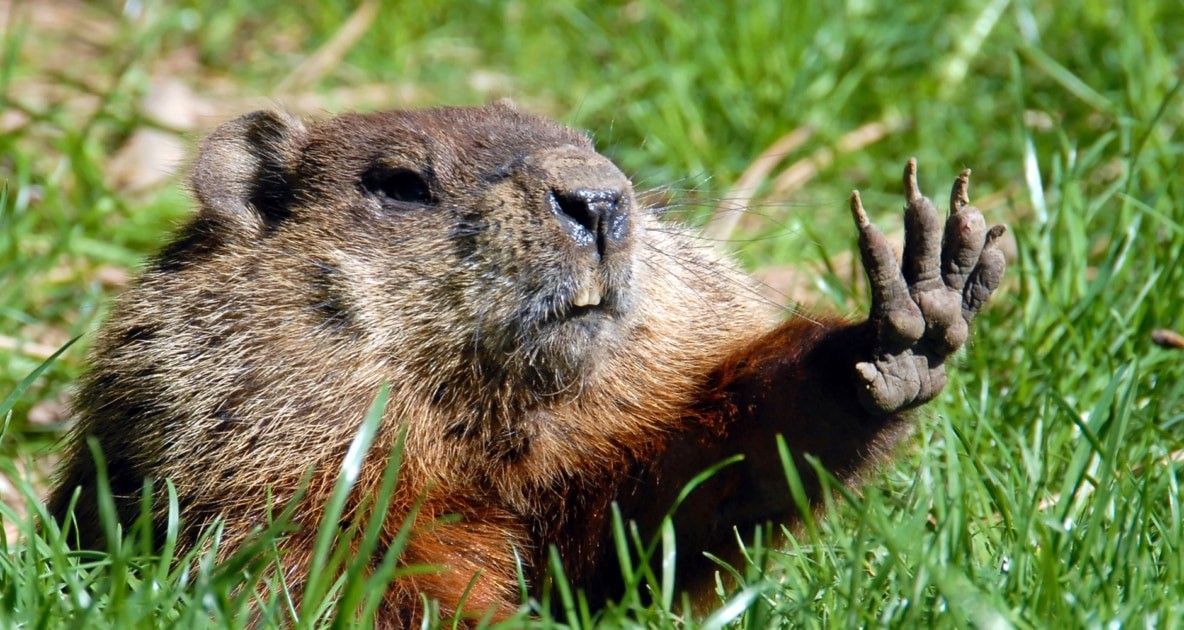Tuleyome’s Science Corner – Groundhogs

We probably all know how the legend goes…if Punxsutawney Phil sees his shadow on February 2, we get to enjoy six more weeks of winter. Perhaps the only true science behind the Groundhog Day lore is the groundhog itself.
Groundhogs (Marmota monax), also knowns as woodchucks, are members of the squirrel family. There are 15 species of marmots and one groundhog in the genus Marmota. All marmots are, essentially giant ground squirrels and various species can be found in Asia, Europe and North America. Found generally in the central and eastern United States and Alaska, groundhogs prefer wide landscapes such as meadows, pastures and other open fields, road sides, and near creeks and streams but are occasionally found in wooded areas.
Groundhogs are North America’s largest ground squirrel weighing in at around 13 pounds. They have small, round ears, black eyes and their stout bodies range from 18 to 24 inches long with a short, bushy tail that averages about half of their body length. Males are slightly larger than females. They are covered in thick fur that ranges from shades of light to dark brown with lighter underparts and darker limbs. They have short legs and powerful feet equipped with thick claws which they use to excavate extensive burrow systems. Since Groundhogs spend about 80% of their time underground, their burrows are intricate; some of them nearly 70 feet long and even include separate “restrooms”. The burrows provide protection from predators which include raptors, foxes, coyotes, bobcats, black bears and other regional meat-eaters. Groundhogs can whistle using their incisors to warn other groundhogs within earshot of approaching danger. They are not track stars but groundhogs are good swimmers and climbers but will defend themselves if they are in a situation without an escape route.
Their sophisticated burrows also provide secure places for them to raise their young. Groundhogs are solitary except during the spring. When a male and female greet each other to show interest in mating, they rub their noses and lips together. Mating takes place in late February to early March and three to eight pups are born in the spring and stay with mom for two to three months.
Groundhogs are true hibernators, meaning they spend the harshest parts of winter in a state close to death. Breathing is almost imperceptible at about only two breaths per minute. Their body temperature drops from about 99 degrees to only 37 degrees Fahrenheit, sometimes lower if the air temperature of the burrow is lower, and their heart rate slows from 80 beats to just about five beats per minute. Hibernation begins in October or November and lasts until, you guessed it, February. To get ready for hibernation, groundhogs bulk up their fat reserves the rest of the year foraging on vegetation, fruit, bark and buds. They’re big fans of hay, alfalfa and clover which sometimes gets them in trouble with farmers. Groundhogs eat an average of one pound of vegetation during a feeding; that’s equivalent to a 150-pound person eating 15 pounds of food in one sitting. Groundhogs are diurnal and are most active during dawn and dusk.
As far as seeing its shadow, groundhogs actually have pretty poor eyesight. Maybe that’s why a menagerie of other animals are used to predict if spring is coming in other parts of the United States. Sardis City, Alabama uses an opossum named Sand Mountain Sam. Eastford Connecticut claims Scramble the Duck and nearby Bridgeport has Beardsley Bart the prairie dog. There’s a pair of frogs named Tad and Lil in Snohomish, Washington and an armadillo named Bee Cave Bob in Texas. There’s even a bass named Benny in the Buckeye Lake Region of Ohio that has folks awaiting the arrival of spring based on his decision to eat a minnow or not.
The National Oceanic and Atmospheric Administration (NOAA) states that Punxsutawney Phil is correct about 46% of the time. Not too bad for a groggy squirrel.
-Kristie Ehrhardt (kehrhardt@tuleyome.org)
Tuleyome Land Conservation Program Manager
RECENT ARTICLES






